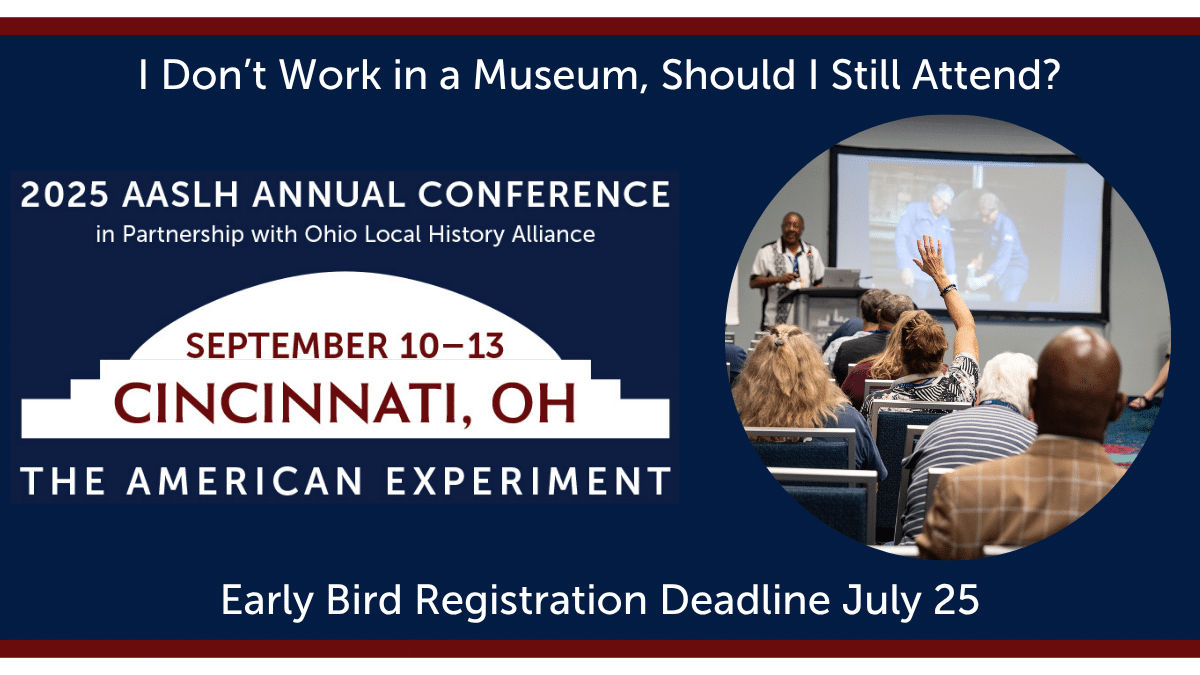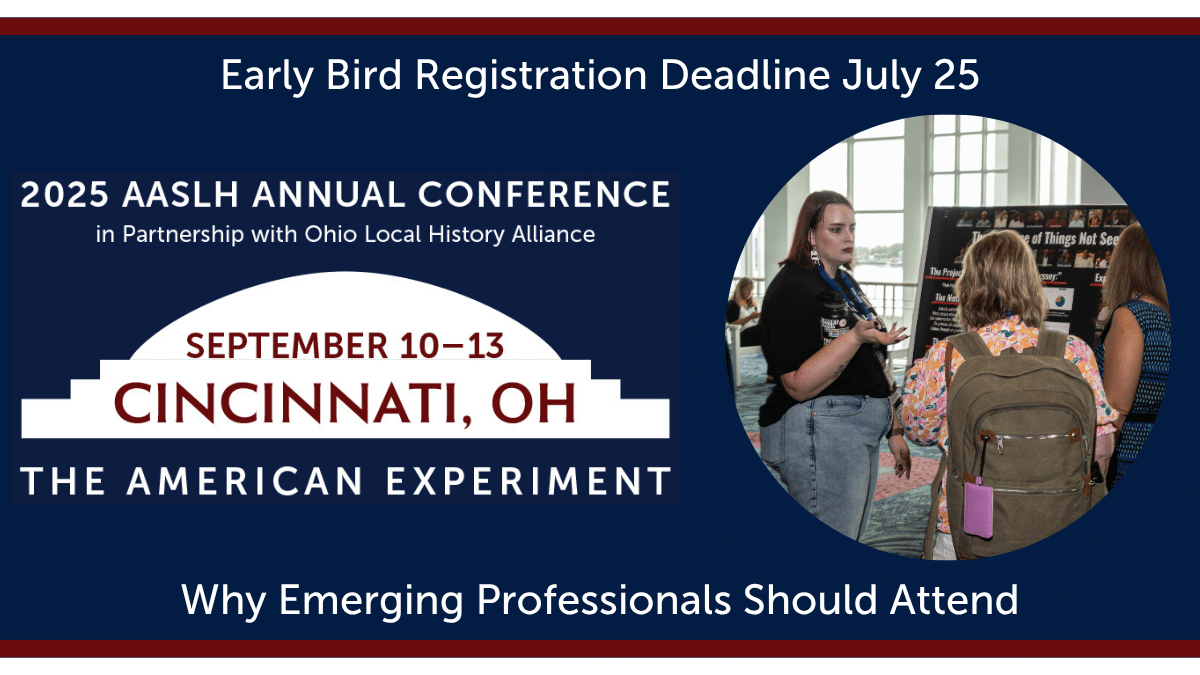
AASLH President & CEO John Dichtl meets with the Humanities Indicators team in DC.
I didn’t feel like it leaving my house at 4:40 in the morning, but Friday the 13th turned out to be an auspicious day. Every leg of the journey and every discussion went particularly well. I flew to Washington, D.C., for a five-hour meeting with the Advisory Committee for the Humanities Indicators project, a committee I’d recently been invited to join, then raced over to the National Endowment for the Humanities office to talk about the History Relevance effort. On the flight home that evening, back to Nashville, this daily bicycle commuter was lucky enough to sit next to our city’s new bicycle and pedestrian transportation planner. Friday, January 13, hit three key areas for me: the health of the humanities, the relevance of history, and progress on sustainability.
In my airborne conversation about bicycle paths, urban transportation needs, gentrification, and rapid city growth I heard how keen local business leaders are to develop sustainable transportation for Nashville’s continued health and expansion. City business and government leaders, here and in many other metropolises, will have to be less reliant on federal funding and are exploring state and private sources for the change they know is necessary to keep this a liveable city. Similarly, history organizations will have to adapt to new funding realities and build new alliances, emphasizing how history adds to quality of life.
Hence, the History Relevance Campaign and making the case to state and county officials, local business leaders, private funders, and taxpayers becomes more important. I won’t summarize here what the History Relevance group is up to, having posted that update last week. But during this trip, fellow History Relevance member, Max van Balgooy, and I, along with Randi Korn of Randi Korn & Associates, Inc., met NEH staff to discuss the possibility of three overlapping efforts. One is the Metrics of Impact project for history organizations to be able to demonstrate their effect on their communities. The second involves a series of public conversations exploring the Value of History statement that the History Relevance campaign developed. And the third would research the gap between how historians and how the public talk about history and history institutions.

Public transportation in Washington, D.C.
The primary reason I was in Washington and the organization that paid for the trip was the American Academy of Arts & Sciences’ Humanities Indicators project. This two-person branch of the Academy, Director Robert Townsend and his colleague Carolyn Fuqua, majestically manage 336 data sets or “indicators.” The statistical information they sort, clean, keep up-to-date, analyze, and selflessly share provides a picture of how the humanities are faring in the United States.
Humanities Indicators cover five broad areas: K-12, Higher Education, Workforce, Funding & Research, and Public Life. Members of the historical community will be especially interested in the “Public Life” section, looking, for example, at indicators for “State Humanities Councils Programs” and “Historic Site Visits.” The “Funding & Research” section is also highly pertinent for history organizations. Have a look at indicators such as “State Library Agency Revenues, by Source,” “Distribution of Foundation Grants among Humanities Activity Types,” “Number of Not-for-Profit Humanities Organizations, by Type, 1989–2012,” and “Not-for-Profit History Organizations and Their Revenues.” For example, a quick look at State Humanities Councils Conducting Programs of Various Kinds reveals that “discussion” and “technology” have become ubiquitous program activities and that there was a jump in programs related to “preservation,” while state humanities councils in the aggregate have backed off on efforts categorized as “publication,” “radio,” “speakers bureau,” “TV,” “Literacy,” and “Collegiate.”
There’s a wealth of information there, and I highly encourage you to explore. But most exciting to me, and perhaps the best part of my Friday the 13th meetings, was learning that Humanities Indicators, as part of a cooperative agreement with NEH, will be creating a National Inventory of Humanities Organizations (NIHO). This will be an online data resource that will list every humanities—and thus history—organization in the country. One of the several data sets that NIHO will be built upon is the IMLS’s Museum Universe Data File (MUDF), which in 2014 counted 35,000 museums in the nation, over half of which (55%) were history organizations. At the time, IMLS announced that the number was double what the government had previously estimated, and history groups, including AASLH, shared the startling news that there were thus about 19,300 history organizations in the United States. Subsequent versions of IMLS’s MUDF, as it cleaned up the data set, brought the total down to something like 33,000 museums and related organizations.
Soon the field will have a reliable tool for counting, comparing, and reaching history and other humanities organizations across the country. It will be critical for making the case for history.



